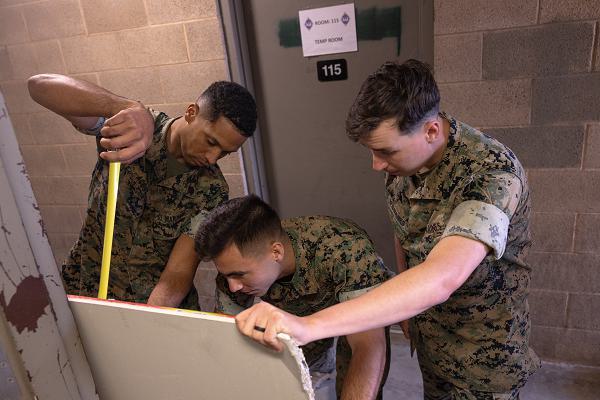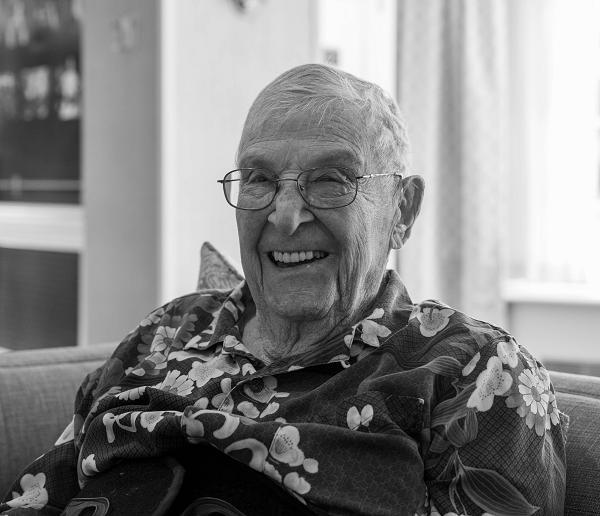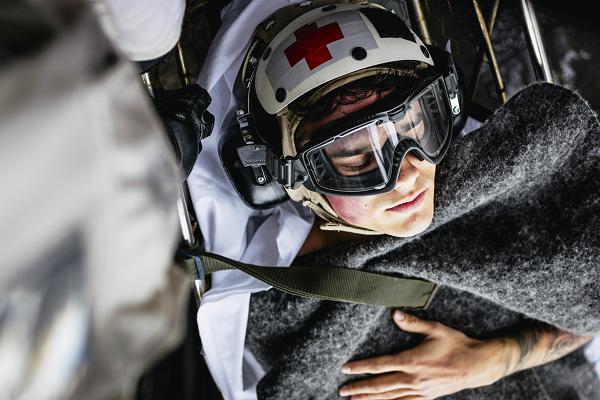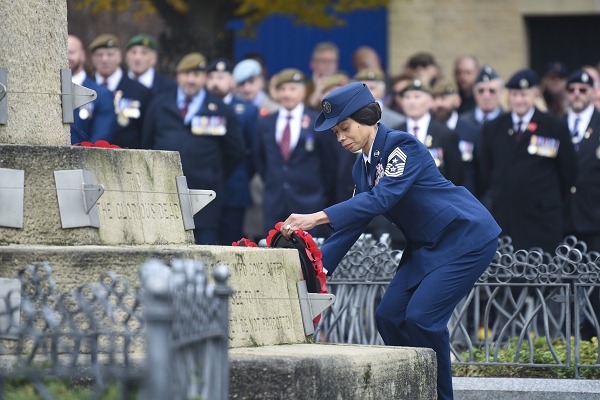- Details
- Hits: 1236

Camp Pendleton, California. (November 25, 2024): The Marines are turning to a reliable workforce to help improve barracks living conditions… fellow Marines. In this photo by Lance Corporal Jeslianne Torres, Marines with 1st Combat Engineer Battalion measure drywall during Operation Clean Sweep, a joint initiative between Marine Corps Installations West and the I Marine Expeditionary to improve living conditions for Marines and Sailors.
Operation Clean Sweep is a determined effort by the Marines to renovate troop barracks that have fallen into disrepair over the years. Instead of relying solely on outside contractors, the Corps has turned to its members to tackle “Self-Help” projects at installations around the world. While using limited contract labor for specific projects, the Navy is relying on Marines and Sailors to work together on projects to address their maintenance needs.
In fact, Marines now must “sign” for their dwellings (just like they do for their rifles) in a contract very similar to a civilian rental agreement. That means damage to their rooms will be their financial responsibility including paying for repairs or damaged equipment much like they would for a lost helmet. The goal is to instill a sense of “ownership” to encourage individual Marines to take care of their “property.”
- Details
- Hits: 1318

Washington D.C. (November 30, 2024): He was a fighter pilot who served in three wars and came home without a scratch. In this photo by Staff Sergeant Emmeline James, retired Colonel Richard Heyman is honored with the British 2024 Swords of Honor by the Royal Air Force Museum American Foundation. He received the award for his efforts and contributions during World War II at the recent “Spirit of the Battle of Britain” banquet marking the 80th anniversary of D-Day. During his 32 years of active-duty service, Colonel Heyman is one of very few aviators who saw action in three wars and came home unscathed.
The Colonel grew up in Bartlesville, Oklahoma and was commissioned a second lieutenant in the Army Air Forces at the tender age of nineteen. He was immediately shipped out to the European theater and assigned to the Eighth Army Air Force based in England. His mission was to escort long-range bombers flying daylight-precision strategic bombing against targets deep into Germany. The Eight Air Forces eventually grew to a strength of more than 200,000 people capable of sending more than 2,000 four-engine bombers and 1,000 fighters on a single mission against enemy targets in Europe. By wars end, the Eighth lost over 26,000 members flying missions in the skies over Germany. Heyman flew approximately 125 missions in his Lockheed P-38 Lightning and, despite numerous close calls, returned home unharmed.
With the onset of the Korean War in 1950, Heyman was recalled to active duty where he found himself flying night bombing runs over North Korea in the A-26 Invader, a twin-engine light bomber. While flying the A-26, Heyman flew between 50 and 75 missions primarily attacking ground targets. He gained theater wide notoriety by downing a North Korean Polikarpov Po-2, a particularly pesky all-weather Soviet built biplane. The Po-2, nicknamed “Bed Check Charlie” by ground troops, carried around five bombs and would attempt to hit what they could, given their ordnance was unguided and dropped at night.
Although extremely slow by modern standards, the plane was an ideal trainer aircraft as well as a low-cost ground attack, aerial reconnaissance, psychological warfare vehicle. These planes would typically attack after midnight to harass U.S. forces, significantly interrupting the sleep of infantry on the ground. On this night, Colonel Heymen tore the canvas-covered biplane to pieces with his six, monstrous .50 caliber machine guns. The Po-2 didn't stand a chance.
- Details
- Hits: 1107

Pacific Ocean. (November 27, 2024): Twenty-three U.S. Navy personnel have been awarded our nation’s highest award, the Medal of Honor, without having fired a shot. These daring Sailors were Hospital Corpsmen and their comrades are the backbone of Navy medicine to this day. In this photo by Petty Officer 3rd Class August Clawson,
Petty Officer 2nd Class Isaac Eaker is carried to an elevator on the flight deck during a medical drill aboard the aircraft carrier USS George Washington while underway in the Pacific Ocean.
The Navy Hospital Corps is comprised of over 30,000 active duty and reserve members who train in over forty technical specialties besides emergency care. They are stationed at military installation clinics and deploy in support of combat operations, humanitarian assistance missions, and disaster relief. Hospital Corpsmen provide direct support to Navy and Marine Corps commands, squadrons, and battalions to provide the best care our nation can offer ashore and afloat.
Their duties include performing tactical casualty combat care, emergency surgeries, and the prescribing of medications. They also hold daily sick calls and administer needed vaccines as part of total patient care for Sailors and Marines both on land and at sea. These medical professionals are as comfortable analyzing lab samples as they are performing physical exams and they even assist with dental care.
- Details
- Hits: 1277

Artic Ocean. (November 28, 2024): What attracts a lot of young folks to join the military is the promise to visit exotic places and see unusual sights. In the above photo, Sailors aboard the Coast Guard Cutter Stratton are given a front row seat to one of nature’s most striking light displays, the Northern Lights. Also called the Aurora Borealis, the Northern Lights have mesmerized mariners as far back as ancient times.
The phenomenon occurs when a solar storm emanating from the Sun showers the Earth with small particles that interact with gases in our atmosphere. These storms are caused by solar flares (explosions on the surface of the Sun) or coronal mass ejections (ejected huge gas bubbles) that generate particles that are carried to earth by “solar winds” travelling at the speed of light. Thankfully, the Earth’s protective magnetic field shields us from these particles to the extent that most of us don’t even notice them.
When these highly charged particles reach Earth, they interact with gases in our atmosphere resulting in beautiful displays of light in the sky. The two primary gases in the Earth's atmosphere are nitrogen and oxygen, and these elements give off different colors during an aurora display. The green we see in the aurora is characteristic of oxygen, while hints of purple, blue or pink are caused by nitrogen.
- Details
- Hits: 1306

Tucson, Arizona. (November 21, 2024): When America’s warfighters are injured on the front lines, their life depends on a swift, effective evacuation by a team of highly skilled special operators. These personnel recoveries are led by a very special breed… the Combat Rescue Officer. In the photo by Senior Airman Devlin Bishop, Combat Rescue Officer candidates perform flutter kicks on the edge of a pool as part of an extremely rigorous screening process that only a select few will pass.
A Combat Rescue Officer (CRO) is a commissioned officer in the United States Air Force who specializes in training, equipping, and developing rescue personnel while deploying directly into combat as team leaders. They are responsible for organizing and strategizing recovery operations and providing the insights and skills that are essential for rescue missions to succeed.
The selection process for CROs begins at Officer Training School at Maxwell AFB, Alabama and includes leadership reaction courses to assess problem-solving capabilities, moral courage, and ability to make difficult decisions. Performance data from these courses is used to determine which cadets are eligible to continue in the training process.
- Details
- Hits: 1210

Bury St. Edmunds, United Kingdom. (November 10, 2024): “In Flanders fields the poppies blow, between the crosses, row on row.” This opening line of the poem "In Flanders Fields", written by Canadian Lieutenant Colonel John McCrae, describes the poppies growing among the graves of soldiers killed during World War I. In this photo by Technical Sergeant Timothy Moore, U.S. Air Force Chief Master Sergeant Tiffany Griego with the 100th Air Refueling Wing lays a wreath at a war memorial on Angel Hill during a Remembrance Day ceremony. By participating in Remembrance Day, the U.S. is honoring the sacrifices made by our British allies in the “war to end all wars.”
The poppy is a symbol of the blood shed by fallen soldiers in a war that was virtually unprecedented in the slaughter, carnage, and destruction it caused. Over the course of the war, over 880,000 British forces died representing a devastating six percent of the entire adult male population of the country. The war was so bloody, three times as many British forces died in a single battle than have been killed in every combat operation since World War II. The Americans suffered 116,516 military fatalities including 53,402 battle deaths and 63,114 deaths from accidents and disease. After the Civil War and World War II, World War I is the deadliest war in American history.


